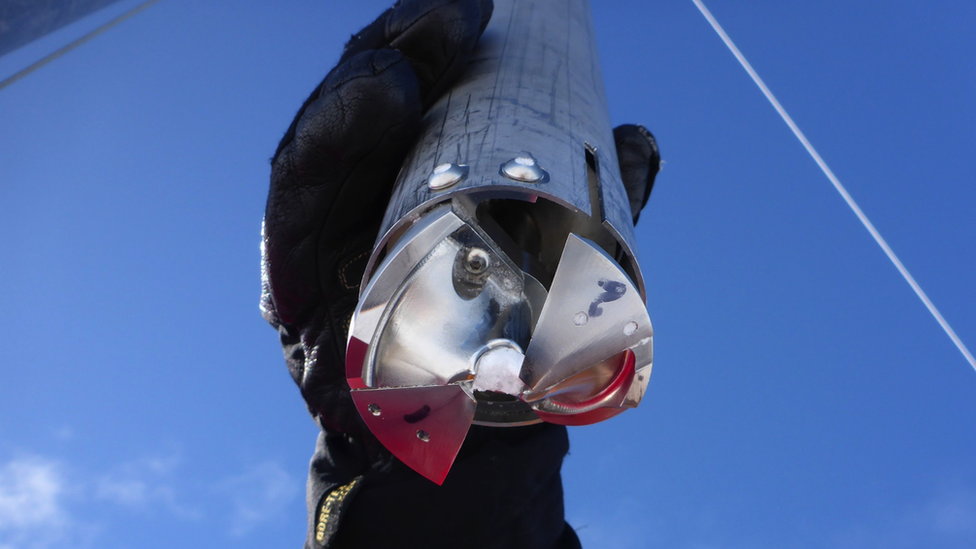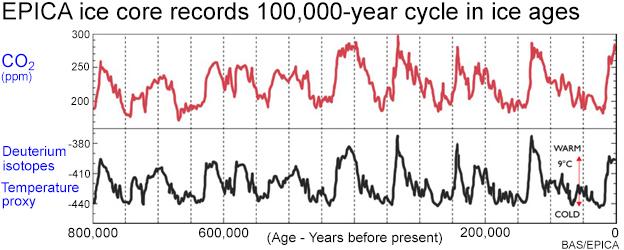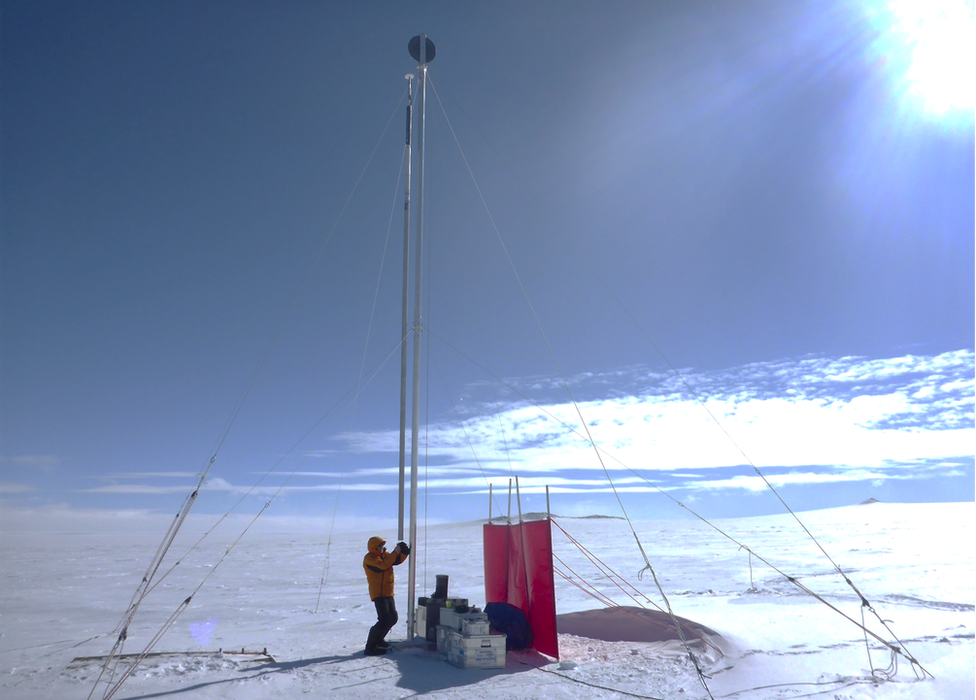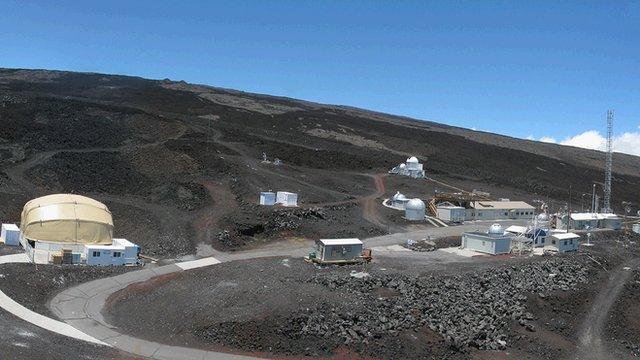Antarctic quest to find 'oldest ice'
- Published

BAS will use a rapid drilling technique this season for exploratory work
Scientists set out this week to try to find the oldest ice in Antarctica.
They are seeking a location where they can drill a frozen core that contains a continuous record of climate change stretching back 1.5 million years.
The chemistry of this ice can be used to deduce past temperatures on Earth.
And tiny bubbles of air trapped inside the core will also betray the levels of heat-trapping gases such as carbon dioxide that were once present in the atmosphere.
This new data is expected to provide additional confidence in the modelled forecasts of how conditions on the planet might develop in the future.
"We've got a very good record of what's been happening over the last 800,000 years but there are some aspects which we cannot fully explain," said Dr Robert Mulvaney from the British Antarctic Survey (BAS), external.
"By studying ice that's 1.5 million years old, it should give us the underpinning belief that we really do so deeply understand the climate system that we can be absolutely sure that what we're projecting for the next few hundred years is based on a complete knowledge of the science," he told BBC News.
Dr Robert Mulvaney: "It will take us many years to finally achieve the core"
The EU-funded Beyond EPICA - Oldest Ice (BE-OI) project, external will update and extend an effort that was conducted a decade ago.
This previous venture, external drilled some 3,200m into the East Antarctic Ice Sheet at a topographic high point known as Dome Concordia (Dome C).
Its recovered core represented 800 millennia of compressed snowfall on the White Continent.
And with each slice through this cylinder of ice, researchers were able to reconstruct ancient climate conditions on a very fine timescale.
As well as being able to sample small encapsulations of historic greenhouse gases such as CO2, methane, and nitrous oxide - they managed also to gauge past swings in temperature.
This was done by analysing the different types, or isotopes, of hydrogen and oxygen atoms in the ice. The ratio of heavy atoms to light ones in snow varies depending on whether the Earth is warm or cool.
The investigation revealed that ice ages came and went on a roughly 100,000-year cycle, external, and that temperatures moved in lock-step with carbon dioxide levels.

But there is a slight problem with this narrative: go back even further in time, to more than a million years ago, and the ice ages seesaw on a roughly 41,000-year cycle. This is evident from particular ocean sediments that can also yield a "proxy" of past temperature.
Precisely why there is a switch in timing is not clear. Scientists know it must be linked to changes in the Earth's orbit around the Sun, external which affect the amount of energy reaching the planet's surface. Yet, it is clear something else is also in play, and researchers think the answer will be found in the proposed 1.5-million-year-long ice core record.
"We have hypotheses of course, but no-one is really certain what the mechanism is that we're missing," said Prof Olaf Eisen, the BE-OI project coordinator from the Alfred Wegener Institute, Germany, external.
"It may have something to do with what the carbon dioxide and other greenhouse gases were doing at the time, but we currently don't have that record. We know what the temperatures were doing from the stable isotopes in marine cores, but we don't know about the atmosphere and that should come from the ice."

The immediate task is to find exactly the right place to drill
The immediate task for the 10-nation project, external is finding the right spot in Antarctica to drill the ice. Hence, the expedition now about to get under way.
BAS will be conducting radar surveys of the ice sheet's layers near Dome C, and sinking some short, 600-metre holes to test ideas on how the ice should age and change temperature with depth.
At the same time, a French party will demonstrate an exciting new probe that can read oxygen isotopes and methane concentrations as it pushes down through the ice.
The current plan holds that if the British can find a favourable site this year, the French will assess it fully next year by taking their SUBGLACIOR drill all the way to the rock bed, more than 3km down.
"Everything on this probe has had to be invented and we go to Concordia to test all the technological choices we have made," explained Dr Jérôme Chappellaz, a senior scientist at the National Centre for Scientific Research (CNRS), France, external.
"So, this will mostly be a trouble-shooting season. It's in 2017/18 that we plan to deploy it to the site we consider to be the optimum one and take the probe all the way to bedrock."

It is a huge logistics effort to operate at Dome Concordia
This should establish whether the chosen site really does hold a 1.5-million-year-old record of past conditions.
A large field campaign could then follow in later Antarctic seasons with specialist coring equipment to retrieve a proper cylinder of ice for more extensive study back in European labs.
"The previous project probably took us about 10 years from initially setting up where we wanted to drill to achieving the core," said Dr Mulvaney.
"It's a very remote location and very expensive to put people into. And we don't want to put all that effort and money into something if we're not pretty sure we're drilling in the right place."
The BE-OI project does have a Plan B, just in case. It plans to do some additional survey work also at Dome F, another of the ice sheet's topographic high points.

Trapped in the ice are bubbles of ancient air that tell us about the state of the climate
Jonathan.Amos-INTERNET@bbc.co.uk, external and follow me on Twitter: @BBCAmos, external
- Published4 April 2012

- Published10 May 2013
